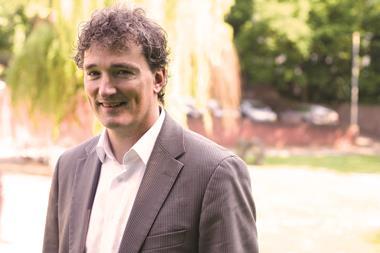NETHERLANDS - The average coverage ratio of Dutch pension funds has dropped by 4 percentage points to 95% during May, Aon Hewitt has said, attributing the fall to changes in the euro swap rate.
The pensions advisor attributed the decline mainly to falling long-term interest rates - the current criterion for discounting liabilities - with the 30-year euro swap rate down to 1.9% at the end of May.
Scheme funding is currently based on the three-month average of the forward curve, as decided by regulator De Nederlandsche Bank (DNB) at the end of last year. Following the previously used daily rate, the drop of the coverage ratio would have been no less than 11 percentage points last month, according to the consultancy.
However, the advisor estimated that in the meantime, average funding had further dropped, to 93% by Monday.
"Because of the strong funding decrease, pension funds might have further fallen short of their recovery plans," said Raymond de Kuiper, director of risk and financial management consultancy at the company.
"Moreover, depending in their interest hedge, the coverage ratios of the various pension funds will be further diverging."
During May, the 30-year swap rates decreased 0.63 percentage point, due to a flight to quality and through the divestment of equity in favour of bonds, Aon Hewitt said.
The consultant added that equity markets declined 2.2% in May, whereas commodities lost 6.9%, mainly thanks to declining oil prices.
Mercer meanwhile concluded that the coverage ratio of the average pension fund was 98% at the end of last month.
It indicated that, due the fall of the 30-year swap yield, the difference between the prescribed and current yield has risen sharply, to 0.55%.
This implied that funding could drop by a further 9 percentage points over the next three months, if the interest rates and equity markets did not improve, Dennis van Ek, actuary and principal at Mercer said.
In an elaboration of the Pensions Agreement, social affairs minister Henk Kamp recently proposed to replace the current discount rate with the 'ultimate forward rate' for long durations.
Under Kamp's proposal, the funding of the average scheme would improve by approximately 6 to 8 percentage points, up from the funding of 89% based on the daily interest rates, Van Ek suggested.
In combination with an additional proposal for funding averaged over the previous 12 months, this would raise the average coverage ratio to approximately 99%, according to the actuary.
In his opinion, the suggested new measures could prevent an anticipated small rights discount at pension funds, or slightly limit a larger discount, particularly at schemes with an above-average interest hedge.












No comments yet